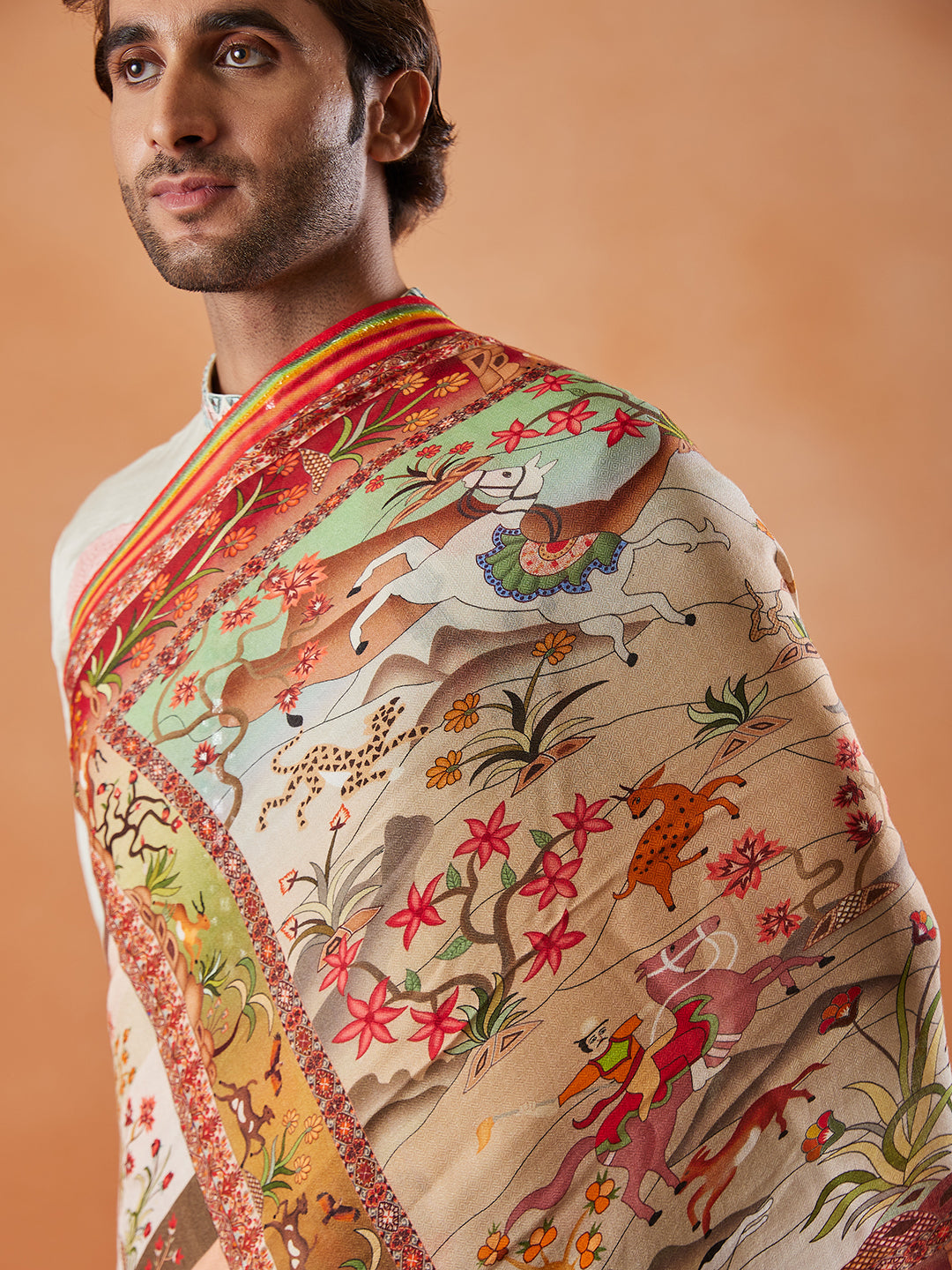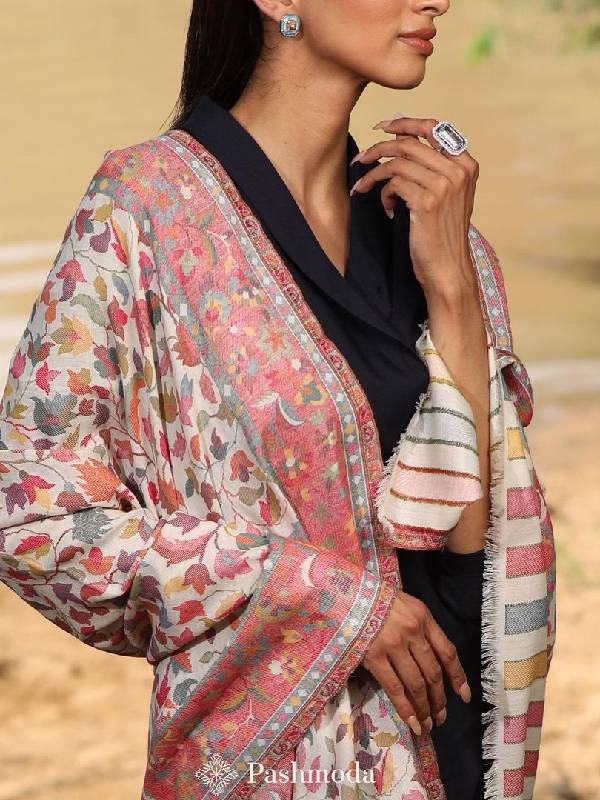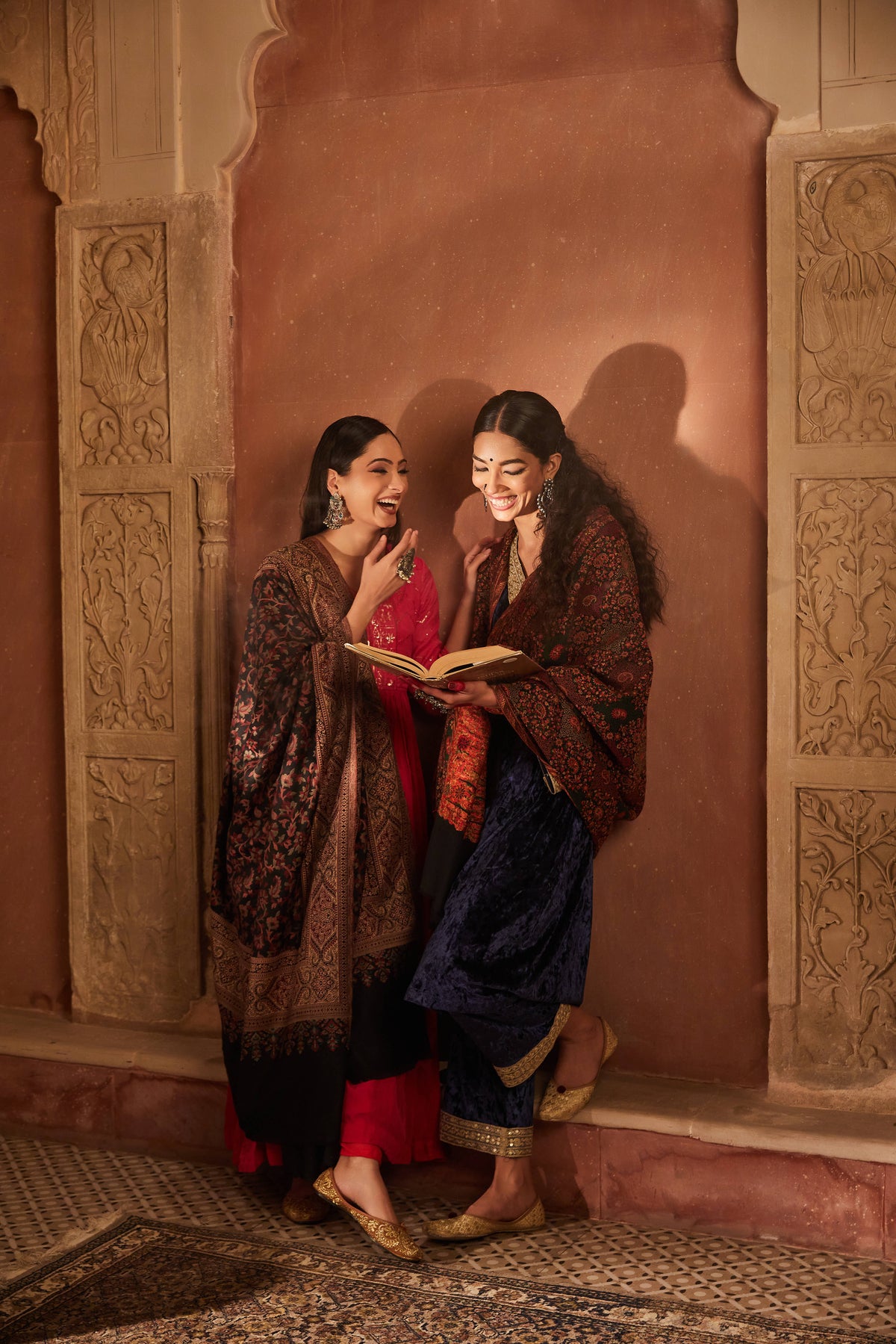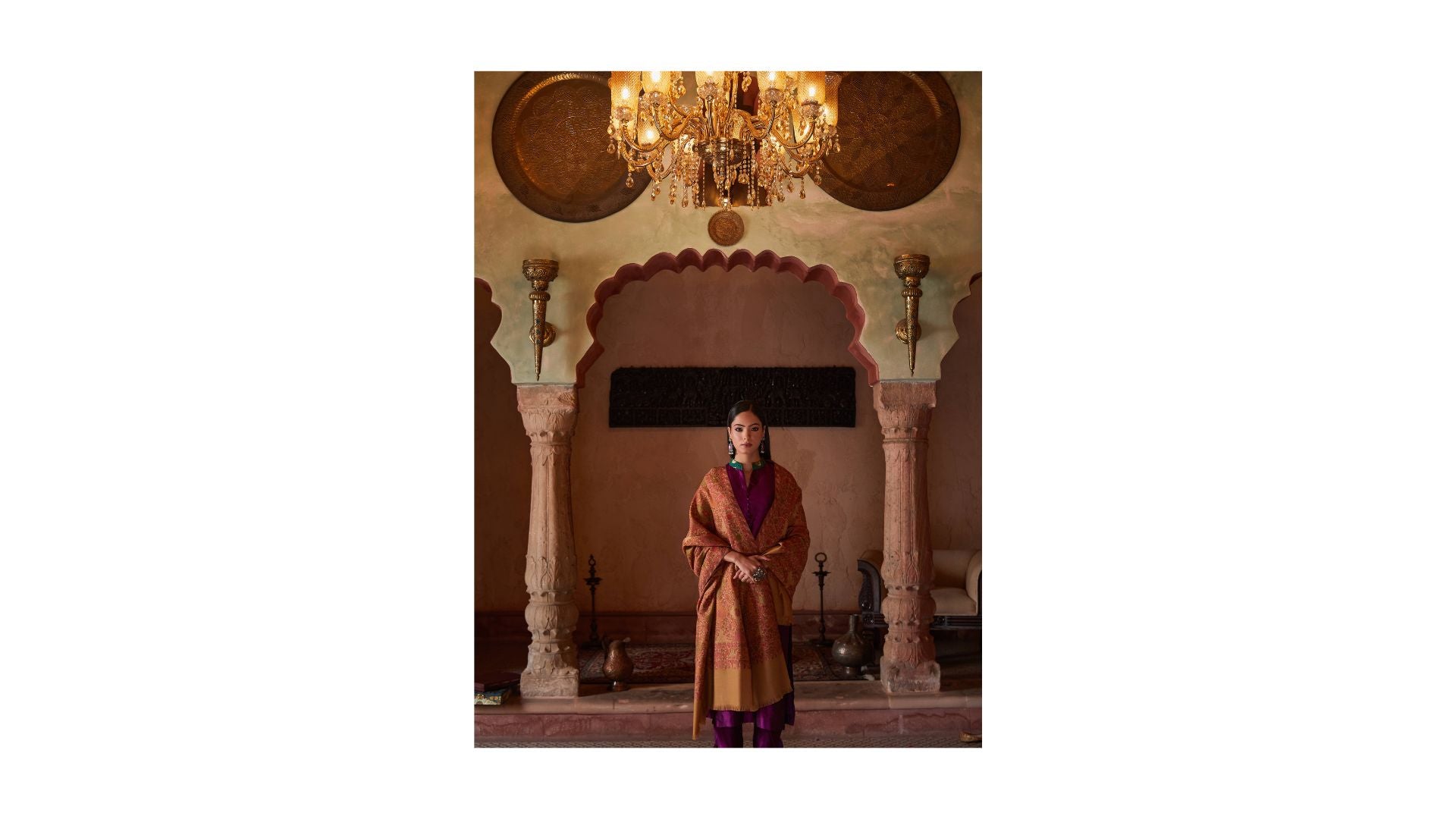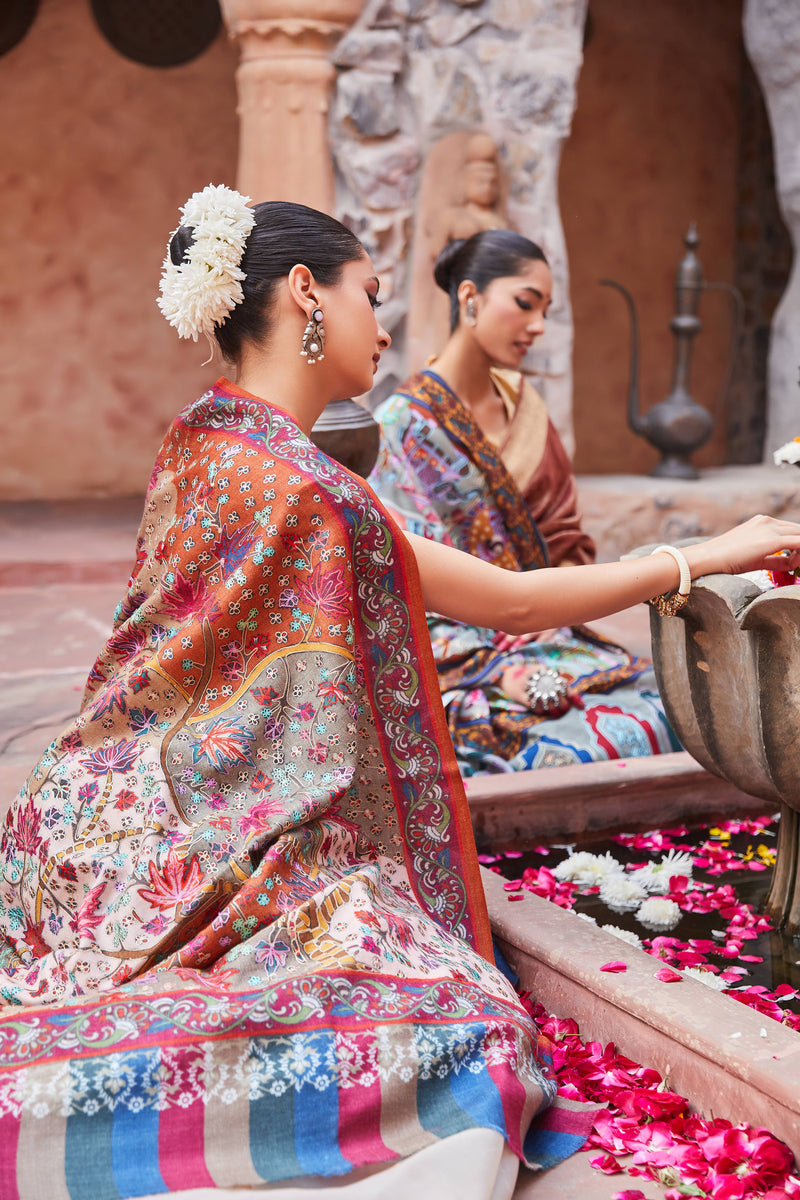
The Story of Jamawar Shawls: Discovering the Artistry in Every Thread.
The Story of Jamawar Shawls: Discovering the Artistry in Every Thread.
At the heart of Kashmir’s legendary textile heritage is the Jamawar shawl, which symbolises great art and sophistication. Being famous for their detailed designs and luxurious warmth, they epitomise the height of weaving skills that have been passed down over generations. This article tells the story of Jamawar shawls, reveals the intricacy embedded in each thread and seeks to unravel a tapestry of history, culture and fashion surrounding these magnificent pieces of art.
Origin and History of Jamawar Shawls
The narrative begins by taking us back to the Mughal era in Kashmir, where textiles were highly valued. The word ‘Jamawar’ itself is thought to come from ‘Jama’ meaning robe and ‘War’ referring to yardage; hence, they originally served as robes worn by kings. In past times, for instance, silk or woollen materials with hints of gold and silver were woven into Jamawar shawls so as to produce unrivalled beauty and rich garments.
Weaving Techniques and Materials
The artistry involved in making Jamawar shawls is known for the complexity and skill required. Traditional techniques include using small wooden spools called “Kani'' serving as bobbins while weaving intricate patterns and motifs specific to Jamavar textiles. This process may take months or even years, depending on how complex the design will be. The texture, the drape and the warmth are the key defining traits of any Jamawar shawl and they depend on the material used to make the shawl. From fine wool to pure pashmina or silk, a jamawar can be made out of any expensive textile.
Intricate Designs and Patterns
Jamawar shawls stand out for their elaborate designs. These shawls feature a wide artistic design range that has motifs inspired by nature, Persian art and the beautiful Kashmiri landscape. They are mostly adorned with floral and paisley motifs, which are brought to life by weaving them in different shades of vibrant colours. The type of Jamawar shawl that epitomises the art form and has the most detailed workmanship and patterns is the ‘Kani Jamawar Shawl’. The Kani Jamawar shawls are only made with predefined designs. They are completely made up of knots, and only a skilled craftsman can bring them to life. One Kani Jamawar takes up to 3 to 36 months of handweaving to be completed, which is enough to tell about the complexity of the patience and skill required to design these shawls.
Significance of Colors in Jamawar Shawls
While a layman might think of colours in a shawl as mere options, a Jamawar shawl has a meaning behind every colour. Their choice of colours here is not just for visual beauty; they hold a symbolic meaning and define the purpose of the shawl. Traditionally, a single Jamawar shawl was woven with 50 colour hues, where all the colours were naturally extracted. These colours were definitely very pleasant to look at (shades of white, turquoise, crimson, and violet), as they were part of the cocolorescence of the beautiful nature that surrounds Kashmir and complemented the intricate designs very well. These shawls have various emotional and cultural values and depict feelings of love, fertility, power, etc. through the colours used in making them.
Cultural and Regional Variations
Jamawar shawls were introduced to India by China; however, India made them its own very quickly, and the art of Jamawar evolved in India very rapidly. Over the years, there have been many variations of these shawls in India, where a lot of them are woven by artists settled in parts of Uttar Pradesh, despite the shawls having their roots in Kashmir. They have spread across South Asia, where different regions have used different signatures to make their own. Jamawar can be found in different parts of India and also in countries like Bhutan in varied styles such as lehengas, sarees and even curtains. While handmade jamawar is the most coveted, cheaper and more affordable options can be found in shawls that have jamawar prints, produced in states like Himachal Pradesh and Punjab.
Jamawar Shawls in Fashion
Jamawar shawls have had a journey of their own, from the royal houses to the biggest fashion houses, and from royal courts to runways. They have evolved and taken many forms (scarves, stoles, etc.) with time. What makes them fashion’s favorites is their timelessness and intricate details, which make them the perfect pick for a designer to showcase the beauty of a textile. Jamawar shawls have a shine to them, which makes the vibrant hues pop up and gives an iridescent effect to the whole look. They can be draped over shoulders for a statement or a formal event, while they can also be worn by men. Celebrities like Virat Kohli and Amitabh Bachchan, as well as Indian Prime Minister Narendra Modi, have been seen donning jamawar shawls in recent history. The biggest Indian designers, like Sabyasachi Mukherjee, have been seen incorporating Jamawar shawls into their couture collections, showing their versatility.
Caring for Your Jamawar Shawl
Of course, something as precious as a Jamawar shawl will need some extra care from our end. To preserve their beauty and treat them as heirlooms, their care should be proper and delicate. It is always recommended that these shawls be dry-cleaned to maintain the strength of the fabric and vibrant colours. They shall be stored away from direct sunlight, where the temperature is cool and there is no moisture that will harm the fabric. You can get special cleaners for these delicate pieces of art, which can help you preserve them for generations to come.
Collecting Jamawar Shawls as Art
Collecting rich textiles is a hobby that many people have. After all, clothing is also a form of art that needs to be cherished by us. For many, they are more than just fashion and trends; they see them as an investment in art, like buying a painting for the house, the only difference being that the art here is wearable. As each piece tells its own story, each colour holds its own meaning, and they are the outcome of immense skill and craftsmanship of the highest quality. Fashion enthusiasts collect these historical pieces to preserve the historical and artistic value that they hold.
Every threat of a jamawar takes up a lot of time and patience and has a story to tell. This is what makes them more than a mere piece of fabric; they are woven with rich Kashmiri history and tell us the economic significance of art. As we admire the beauty of a Jamawar shawl, let us also admire the legacy they hold, the painstaking effort every artisan took in bringing them to life, and the rich craftsmanship our country holds. As we pass down these pieces of love to future generations, let us also pass down this legacy, culture and the spirit of the artisans who create them.

